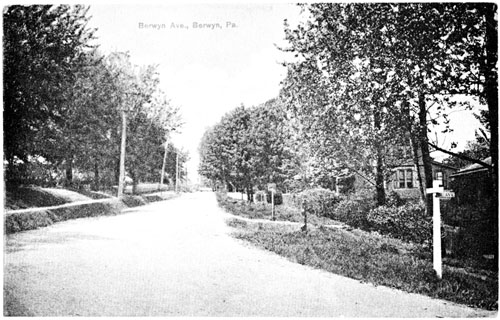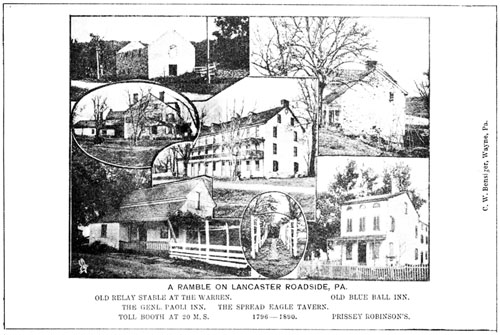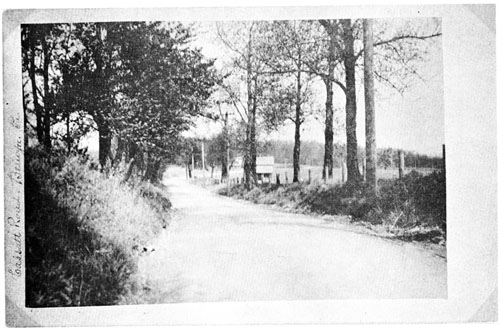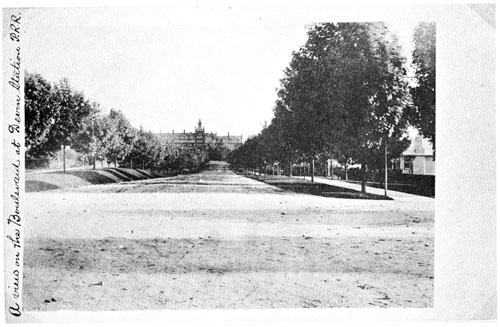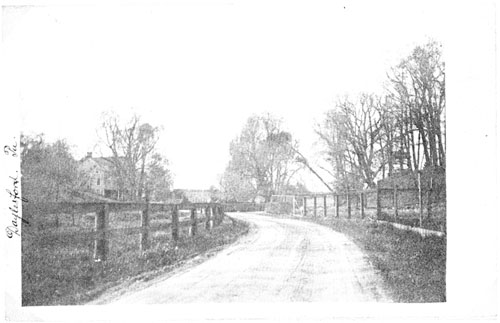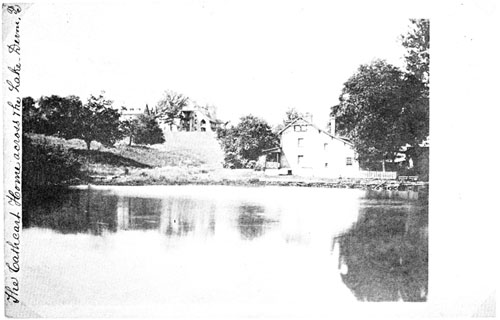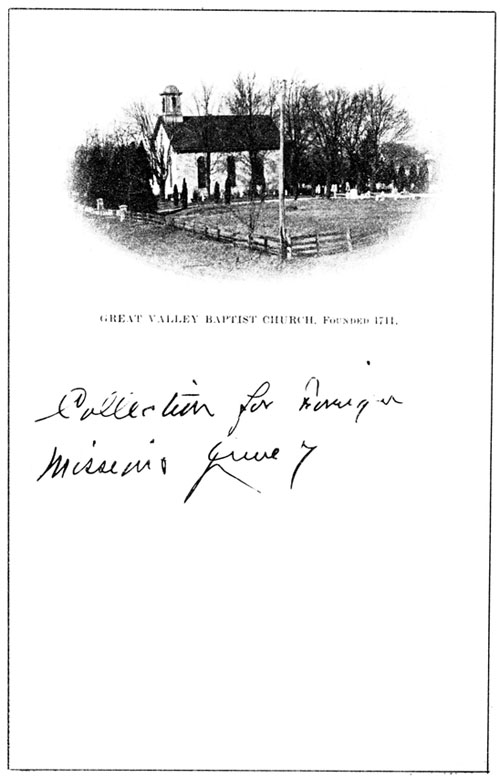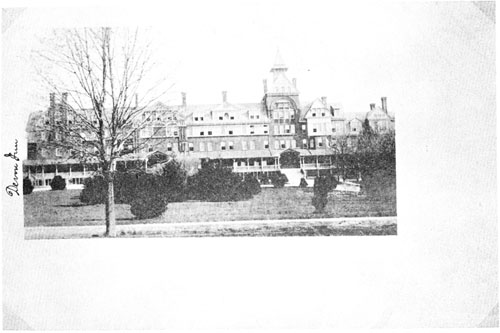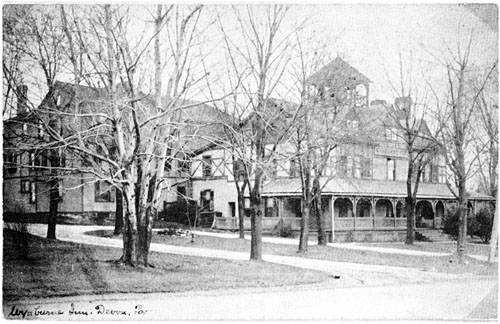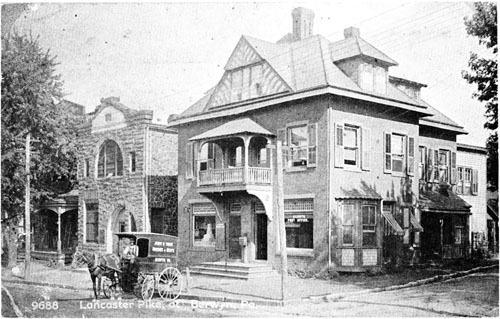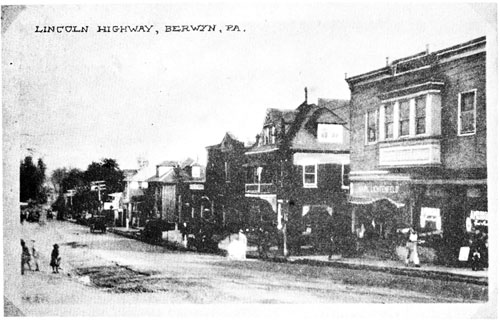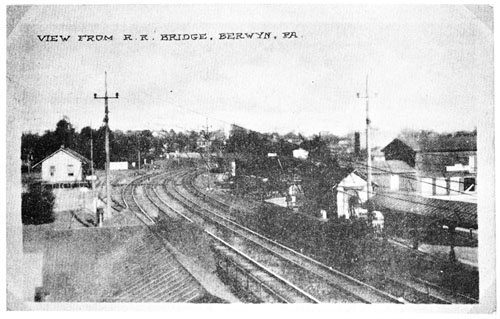|
Home : Quarterly Archives : Volume 17 |
Tredyffrin Easttown Historical Society |
|
Source: April 1979 Volume 17 Number 2, Pages 35–42 A Portfolio of Old Picture Postcards The picture postcard craze in the United States was at its peak during the period between 1897 and the First World War. While picture postcards had been popular in Europe since the 1880's, they did not reach this country until almost the end of the nineteenth century. Some view cards (as opposed to advertising or trade cards) were in circulation in the United States as early as in 1893, it is reported by George and Dorothy Miller in their Picture Postcards in the United States, but the "majority of pioneer view cards were not produced prior to 1897". At the end of 1905, it was reported in the Dry Goods Economist that the number of illustrated postcards had "gained considerably in the public's favor during the year" and that postcard manufacturers at the year end were "turning out a hundred times more cards than they produced at the beginning of the year". A number of reasons were suggested for this popularity: that people were becoming too busy — or too lazy — to write letters (described in one article as "epistolary sloth"); that the lower postage rates for cards made them attractive; that they were readily available in a variety of stores and outlets, including "drug stores, cigar stands, hotels, barber shops, and department stores", as well as postcard "emporiums", and at a low cost. It was also suggested that they were much more effective in giving a vivid impression of sights seen or places visited than words could ever be. (And many cards were simply collected, to be put into special albums.) Whatever the reason, by 1908 almost 668 million picture postcards were mailed in the United States, and by 1913 the total was over 968 million. Many of the early cards, particularly those in color, were printed in Europe, and particularly in Germany, France and England. Printing techniques for postcards had been developed in Europe for two decades, and at that time were generally recognized as being more advanced than those in the United States. While American technology soon improved and domestic production increased each year, the early competition from European manufacturers was such that provisions for a protective tariff on postcards were included in the Payne-Aldrich tariff act of 1909. Surprisingly, picture postcards were not limited to views of places in the larger cities, to monuments or well-known tourist attractions, or to resorts like Atlantic City or Coney Island. When such postcards were received in "country" places, it was pointed out in the American Magazine in March 1906, frequently local pride required that a card (or series of cards) with a local view be made up, to be printed either by a local printer or by one of the larger postcard manufacturers, so that it could be sent in return. This locality was no exception. On the following pages are shown a few early postcards with views of places in this area. The card on top of the opposite page was printed by the Newvochrome process in Germany by a printer with plants in Leipzig, Dresden, and Berlin, and was published by the Berwyn Pharmacy. The original card is in color. On the bottom of the page is a handsome card printed by Raphael Tuck and Son. Originally a British manufacturer, the company also established offices at 368 Broadway in New York City in the 1890's and in 1900 was located at 122 Fifth Avenue in that city. The four cards on pages 38 and 39 are part of a series that appears to have been printed locally sometime around 1909, judging from the message on the back of the top card. (The message also indicates that at that time there was next-day postal service between Berwyn and Philadelphia: "Lizzie and I," it reads, "propose calling to see you at your home tomorrow ... afternoon.") The two cards on page 40, also apparently printed locally, are even older and can be dated at about 1905. The reverse side of these cards was used for address purposes only, as required by postal regulations prior to 1907, with the space below (or around) the picture on the obverse of the card used for any messages. Judging from the postmarks, the cards on page 41 were circulated and used about ten years later. The lower card is described as "A Genuine Photograph" and was printed by The Garroway Company in Rutherford, New Jersey. Finally, on page 42 are two cards from a series of a much later vintage, probably the mid- or late 1920's or early 1930!s. These cards, and others in the same series, were printed by the Norris Mfg. Cc., located at 33 Union Square in New York City.
C. W. Bensiger, Wayne, Pa. C. A RAMBLE ON LANCASTER ROADSIDE, PA. OLD RELAY STABLE AT THE WARREN. OLD BLUE BALL INN. THE GENL. PAOLI INN. THE SPREAD EAGLE TAVERN. TOLL BOOTH AT 20 M. S. 1796 - 1890. PRISSEY ROBINSON'S.
|
